Looking for a fast and reliable review of infectious disease nursing bullets and nursing pearls for the NCLEX? This comprehensive guide brings together 101+ high-yield bullets on transmission-based precautions, infection control, common pathogens, and hallmark clinical signs. Whether you’re a nursing student or a practicing RN, these infectious disease bullets make studying easier and reinforce the critical concepts that often appear on the NCLEX.
Transmission-Based Precautions
1. Standard Precaution – The Foundation of Infection Control. Use with all patients regardless of diagnosis. Perform hand hygiene after any contact with blood or body fluids, wear gloves for any potential contact with bodily fluids, and use masks/eye protection if splashing is possible. All sharp instruments must be disposed of in puncture-resistant containers (never recap used needles).
2. Contact Precautions. Require gown and gloves upon room entry; dedicate or disinfect equipment between patients. A private room is preferred (or cohort with same infection). Indicated for infections spread by direct contact, such as MRSA, VRE, C. difficile, RSV, scabies. For C. diff, remember alcohol hand rubs won’t kill spores – wash hands with soap and water on exit.
3. Droplet Precautions. Require a surgical mask when within at least three (3) feet of the patient. Place patient in a private room (or cohort with same pathogen). Used for large-droplet infections like influenza, meningococcal meningitis, mumps, rubella, pertussis (whooping cough). Limit patient transport; if transport is necessary, put a surgical mask on the patient.
4. Airborne Precautions. Require an N95 respirator for staff and an airborne infection isolation room with negative pressure (6–12 air changes/hour). Used for tiny droplet nuclei that stay suspended, as in TB, measles, varicella (chickenpox) (also disseminated zoster or SARS). Keep the door closed and only immune staff should care for measles or varicella patients. If patients must leave the room, have them wear a surgical mask.
5. Neutropenic/Protective Precautions. Used for immunocompromised patients (low neutrophils). This is essentially reverse isolation: caregivers wear gloves/masks to protect the patient from germs. No fresh fruits, vegetables, flowers, or live plants are allowed in the room (they can carry microbes). Strict hand washing is required before entry to protect the patient.
6. PPE Donning Order. When putting on personal protective equipment, the recommended sequence is: gown first, then mask (or N95 respirator), then goggles/face shield, and gloves last. This protects you as you gear up.
7. PPE Doffing Order. When removing PPE, take gloves off first (they are most contaminated), then goggles/face shield, then gown, and mask off last. Remove PPE at the doorway or anteroom except the respirator (remove after leaving airborne isolation room) to avoid contaminating other areas.
8. Patient Transport & Isolation. Avoid transporting isolated patients unless essential. For droplet or airborne cases, have the patient wear a surgical mask during transport. Alert the receiving department of isolation needs in advance so they can prepare.
9. Additional Precaution Notes. Use dedicated or disposable equipment (stethoscopes, thermometers) for contact isolation patients to prevent cross-infection. For droplet precautions, visitors and staff should maintain distance ≈3 feet or wear a mask if closer. For airborne, keep the room door closed and monitor negative airflow regularly. Always combine transmission-based precautions in addition to standard precautions – standard precautions are the foundation.
Common Pathogens
10. Staphylococcus aureus (including MRSA). Gram+ cocci often on skin; can cause wound infections, pneumonia, sepsis. MRSA (Methicillin-Resistant S. aureus) requires contact precautions. Treat with vancomycin or other MRSA-active antibiotics. Hand hygiene and contact isolation are key to prevent spread.
11. Vancomycin-Resistant Enterococcus (VRE). Enterococcus faecium/faecalis resistant to vancomycin. Causes UTIs, bloodstream or wound infections, especially in ICUs. Use contact precautions (gloves/gown) and dedicated equipment. Options for treatment include linezolid or daptomycin.
12. Clostridioides difficile (C-diff). Spore-forming anaerobic bacillus causing severe antibiotic-associated colitis. Causes profuse watery diarrhea with a distinct foul odor and cramping. Contact precautions required; hand washing with soap (not just sanitizer) is mandatory, as alcohol gels don’t kill spores. Treat with metronidazole or oral vancomycin. Clean room with bleach (spores resist routine cleaners).
13. Mycobacterium tuberculosis (TB). Acid-fast bacillus spread by airborne droplets. Causes chronic cough (often with blood-tinged sputum), night sweats, weight loss, fever, and lung infiltrates. Requires airborne isolation (negative-pressure room, N95 mask). Diagnosis via sputum AFB culture; treated with months-long multi-drug therapy (RIPE: rifampin, isoniazid, pyrazinamide, ethambutol).
14. Human Immunodeficiency Virus (HIV). Blood-borne retrovirus that attacks CD4 T-cells. Leads to AIDS when CD4 count <200 and opportunistic infections appear. Spread via blood, sexual fluids, perinatal exposure. Use standard precautions (gloves for contact with body fluids) for all patients – you often won’t know who is positive. Emphasize antiretroviral therapy (ART) adherence to suppress viral load. Opportunistic infections in AIDS include Pneumocystis pneumonia (dry cough, hypoxia), Kaposi sarcoma (purple skin lesions), thrush (oral Candida), and TB.
15. Hepatitis B Virus (HBV). Blood and body-fluid transmitted virus (e.g., via needles, sexual contact). Causes acute and chronic hepatitis – jaundice, elevated liver enzymes, RUQ pain. A major risk to healthcare workers via needlestick injuries – hence the HBV vaccine is required for healthcare workers. Use standard precautions; for known HBV patients, handle sharps carefully and ensure HBV vaccination of staff. Chronic HBV can lead to cirrhosis or liver cancer.
16. Hepatitis C Virus (HCV). Bloodborne (IV drugs, transfusions); most infections become chronic. No vaccine. Causes chronic liver disease (often asymptomatic until advanced). Use standard precautions. Treatments (antivirals) can cure many cases now. Educate on not sharing needles and blood screening.
17. Hepatitis A Virus (HAV). Fecal-oral transmission (contaminated food or water). Causes acute hepatitis with fever, nausea, jaundice; usually self-limited. Contact precautions for diapered/incontinent patients (as it spreads via stool). Emphasize hand hygiene. A vaccine for Hep A exists for prevention.
18. Influenza Virus. Respiratory droplet spread. Causes fever, cough, body aches, often abrupt onset. Use droplet precautions (mask) for hospitalized flu patients. Annual vaccination is the best prevention. Antiviral meds (oseltamivir) can shorten illness if started early. Emphasize cough etiquette and staying home when sick (to prevent transmission).
19. Varicella Zoster Virus. Causes chickenpox (primary infection) and shingles (herpes zoster) on reactivation. Chickenpox is airborne and contact transmissible (very contagious): pruritic “dew drop on a rose petal” lesions in different stages of healing. Use airborne & contact precautions for chickenpox; isolate until lesions crusted. Do not give aspirin to children with varicella or flu (risk of Reye’s syndrome). A live attenuated vaccine (VAR) prevents chickenpox; a shingles vaccine is recommended for older adults to prevent reactivation.
20. Rubeola (Measles) Virus. Extremely contagious airborne virus. Presents with high fever, cough, coryza (runny nose), conjunctivitis, and Koplik’s spots (tiny white spots inside the cheeks) followed by a confluent maculopapular rash starting on the face. Requires airborne isolation (negative pressure, N95) as measles can linger in the air. Preventable by MMR vaccine. Non-immune healthcare workers should not care for measles patients.
21. Rubella (German Measles). Generally a milder illness with low-grade fever, lymph node swelling, and a fine pink rash that starts on the face and spreads down. Spread via droplets – use droplet precautions. The big concern is pregnant exposure – rubella can cause miscarriage or severe birth defects (congenital rubella syndrome) if a non-immune pregnant woman is infected. MMR vaccine prevents rubella (live vaccine – contraindicated in pregnancy).
22. Neisseria meningitidis. Gram– diplococcus causing meningococcal meningitis and sepsis. Droplet spread (close contact). Causes sudden high fever, stiff neck, headache, often a petechial or purpuric rash in meningococcemia. Rapid progression can lead to shock. Droplet precautions for hospitalized cases, and close contacts need post-exposure antibiotic prophylaxis. There is a vaccine for adolescents (MenACWY).
23. Streptococcus pyogenes (Group A Strep). Causes strep throat, scarlet fever, impetigo, cellulitis. Spread by droplets or direct contact. Untreated strep throat can lead to rheumatic fever or glomerulonephritis. Droplet precautions for pharyngitis or scarlet fever in kids (until 24h on antibiotics). Scarlet fever: strep throat with a red sandpaper-like rash and “strawberry tongue”. Treat group A strep with penicillin or amoxicillin.
24. Streptococcus pneumoniae. Common cause of community-acquired pneumonia, otitis media, and meningitis. Spread via droplets. Pneumococcal pneumonia classically produces rust-colored sputum and lobar consolidation on CXR. Use droplet isolation if hospitalized. There are adult and pediatric vaccines (PCV13, PPSV23) to prevent invasive pneumococcal disease.
25. Clostridium tetani. Anaerobic gram+ rod in soil; releases tetanospasmin toxin causing tetanus. Not contagious person-to-person (enters via wounds). Causes painful muscle spasms and rigid paralysis – first sign is often trismus (lockjaw) and neck stiffness, progressing to severe back arching (opisthotonos) and muscle spasms triggered by minor stimuli. Prevent with routine tetanus vaccination (Tdap/Td). Tetanus is treated with wound care, human tetanus immunoglobulin, and muscle relaxants; mortality is high if untreated.
26. Clostridium botulinum. Anaerobic spore-former producing botulinum toxin, a potent neurotoxin. Causes botulism, typically foodborne (improper canning) or in infants consuming honey (infant botulism). Leads to descending flaccid paralysis – cranial nerve palsies (blurred vision, difficulty swallowing) followed by symmetric paralysis of limbs. Honey is contraindicated in infants <1 year due to botulism spore risk. Treatment is antitoxin and supportive care (possible ventilation).
27. Borrelia burgdorferi. Spirochete transmitted by Ixodes ticks causing Lyme disease. Key early sign is erythema migrans rash – an expanding “bull’s-eye” rash with a red center and surrounding rings (appears in about 70-80% of cases). Untreated Lyme can cause fevers, arthritis, neuropathies. Treat with doxycycline (amoxicillin if pregnant or child). Teach tick bite prevention (long sleeves, tick checks).
28. Plasmodium (various species). Parasite causing malaria, transmitted by Anopheles mosquitoes in endemic regions. Causes periodic fevers, chills, sweats, anemia, splenomegaly. Not endemic in US but important globally. Use mosquito avoidance and prophylactic antimalarial meds when traveling to endemic areas. Infected patients are not generally isolated (no person-person spread except via blood).
29. Zoonotic Viruses (e.g., Ebola, Rabies, Zika). These are less common but high-yield concepts. Ebola virus causes viral hemorrhagic fever – transmitted by body fluids, requires contact and droplet isolation and strict PPE (impermeable suit); symptoms include high fever, bleeding, GI issues (high mortality). Rabies (Lyssavirus) from animal bites causes encephalitis – look for hydrophobia (throat spasms at water intake) and aerophobia (sensitivity to air) leading to panic and foaming saliva; nearly 100% fatal once symptomatic, but preventable with post-exposure prophylaxis (rabies immunoglobulin and vaccine). Zika virus (Flavivirus from Aedes mosquitoes) causes fever, rash, conjunctivitis; notable for causing microcephaly and birth defects if a pregnant woman is infected. Emphasize mosquito bite prevention and that infected patients should avoid mosquito exposure to prevent further transmission.
Pharmacology Pearls (Infectious Diseases)
30. Penicillins. Broad beta-lactam antibiotics (e.g. penicillin G, amoxicillin) for many gram+ infections. Allergy caution: penicillins commonly cause allergic reactions; assess for penicillin allergy and note ~5–10% of those have a cross-allergy with cephalosporins. Monitor for rash, itching, hives, or anaphylaxis especially with first doses. Penicillins may reduce effectiveness of oral contraceptives (advise backup birth control).
31. Cephalosporins. Beta-lactams related to penicillin (e.g. ceftriaxone, cephalexin). Cross-sensitivity: patients with severe penicillin allergy might react to cephalosporins (especially first-generation), so screen for penicillin allergy before giving. Some cephalosporins (like cefotetan, cefoperazone) can cause a disulfiram-like reaction with alcohol – advise patients to avoid alcohol during and 72 hours after therapy to prevent flushing, nausea, and vomiting. Common side effect is GI upset; can give with food if needed.
32. Vancomycin. Glycopeptide antibiotic for serious gram+ infections (MRSA, C. diff). Monitor trough levels – draw trough before the 4th dose, or per protocol, to ensure therapeutic levels and avoid toxicity. Vancomycin is nephrotoxic and ototoxic: check BUN/Cr and watch for hearing loss or tinnitus. Infuse IV vancomycin slowly (≥60 minutes); rapid infusion can cause Red Man Syndrome – a histamine reaction with flushing, rash, hypotension. If Red Man Syndrome occurs, stop infusion, treat with antihistamines, and restart at a slower rate. Use a central line for long-term IV Vanco to avoid phlebitis.
33. Aminoglycosides (e.g. Gentamicin, Tobramycin): Potent bactericidal antibiotics for serious gram– infections. Highly nephrotoxic and ototoxic. Monitor renal function (BUN, creatinine) frequently – gentamicin can cause acute kidney injury. Also observe for ototoxicity: signs include tinnitus, vertigo, hearing loss – report these immediately. Doses may be adjusted or held in renal impairment. Trough levels are monitored to avoid toxicity. Incompatible with penicillins in the same IV line (flush between drugs). Encourage hydration to protect the kidneys.
34. Tetracyclines (e.g. Doxycycline, Tetracycline). Broad-spectrum bacteriostatic agents. Contraindicated in pregnancy and in children <8 years – they bind developing teeth/bone, causing permanent tooth discoloration and growth inhibition. Avoid dairy, antacids, and iron within 2 hours of dose – these bind the drug and decrease absorption in the gut. Cause significant photosensitivity – advise sun protection (hat, sunscreen) because even minimal sun can cause severe sunburn. Take with a full glass of water and remain upright 30 minutes to prevent esophageal irritation (doxycycline can cause pill esophagitis).
35. Macrolides (e.g. Azithromycin, Erythromycin). Broad-spectrum, often for respiratory infections and atypical organisms. Commonly cause GI upset (especially erythromycin) – can take with food if needed to reduce stomach pain. Cardiac caution: macrolides can prolong the QT interval, risking arrhythmias. Use cautiously in patients with existing QT prolongation or on other QT-prolonging drugs. Monitor for any palpitations or dizziness. Azithromycin has a long half-life (5-day course often sufficient). Clarify that it can interact with warfarin and increase INR (monitor PT/INR).
36. Metronidazole (Flagyl). An antiprotozoal and anaerobic antibacterial (used for C. diff, trichomoniasis, bacterial vaginosis, etc.). Absolutely avoid alcohol during therapy and for 48 hours after last dose – it causes a disulfiram-like reaction (flushing, severe nausea/vomiting, headache) with even small amounts of alcohol. Common side effect is a metallic taste in the mouth and dark urine (harmless). Advise patients that urine may turn brownish. Often given for anaerobic infections and as prophylaxis in GI surgeries.
37. Sulfonamides (e.g. Trimethoprim-Sulfamethoxazole “Bactrim”). Often used for UTIs and PCP prophylaxis. Check for “sulfa” allergies – sulfonamides can cause serious rash or anaphylaxis if patient is allergic. Hydration is critical: push fluids (8–10 glasses water/day) to prevent crystaluria and kidney stone formation. Can cause photosensitivity – use sunscreen and avoid tanning. Also monitor CBC for longer courses – can cause bone marrow suppression (folate antagonist) leading to anemia or leukopenia. Rarely, severe skin reactions like Stevens-Johnson Syndrome can occur – if any rash or mucosal lesions develop, stop drug and seek care immediately. Sulfa drugs can elevate bilirubin in newborns – they’re contraindicated near term pregnancy and in infants <2 months (risk of kernicterus).
38. Fluoroquinolones (e.g. Ciprofloxacin, Levofloxacin). Broad-spectrum DNA gyrase inhibitors. Tendon damage risk: Black Box warning – can cause tendinitis and Achilles tendon rupture, especially in older adults or those on steroids. Instruct patients to report any tendon pain or swelling (e.g. ankle pain) and to stop exercise if tendon pain develops. Traditionally avoided in children and pregnant women due to potential cartilage toxicity in animal studies (use only if no alternative). Chelation caution: like tetracyclines, fluoroquinolones bind with iron, calcium, antacids – avoid taking with milk, antacids, or supplements (give 2 hours apart) to ensure absorption. Can cause photosensitivity and also QT prolongation (moxifloxacin especially) – use caution in those with cardiac issues. Encourage hydration to prevent crystalluria in the urine.
39. Rifampin. First-line TB drug. Harmless orange-red discoloration of body fluids is expected – urine, sweat, tears, saliva may turn reddish-orange. Teach patients this is normal (but it can stain soft contact lenses or clothing). Rifampin is hepatotoxic – avoid alcohol and monitor liver enzymes. It also induces liver enzymes, so it reduces effectiveness of oral contraceptives and many other drugs – women on OCPs need to use another contraceptive method. Typically given for many months in TB therapy; adherence is critical to prevent resistance.
40. Isoniazid (INH). Key TB medication. Hepatotoxic – monitor for signs of hepatitis (fatigue, elevated AST/ALT, jaundice) and avoid alcohol use. Peripheral neuropathy is a common side effect, because INH depletes vitamin B₆ (pyridoxine). Patients may report numbness or tingling in hands/feet – to prevent this, they are usually prescribed pyridoxine (vitamin B₆) supplements along with INH. Instruct patients to report any neuropathy symptoms promptly. Also, INH should be taken on an empty stomach for best absorption (1 hour before or 2 hours after meals).
41. Pyrazinamide (PZA). TB drug that is hepatotoxic (like the others – monitor LFTs) and can cause hyperuricemia. Patients may develop joint pain (arthralgia) or gout flares due to increased uric acid. Encourage fluids and maybe allopurinol if prone to gout. Usually given in the initial 2 months of TB therapy.
42. Ethambutol. TB drug known for ocular toxicity. It can cause optic neuritis – blurred vision, color vision changes (difficulty distinguishing red-green). Remember “E for eyes” with Ethambutol. Baseline and periodic eye exams are recommended. If vision changes occur, notify provider – drug may be stopped. Also hepatotoxic, like other TB meds.
43. Amphotericin B. A potent IV antifungal for serious systemic fungal infections (histoplasmosis, cryptococcus, etc.). Nicknamed “ampho-terrible” for its toxicity. Infusion-related reactions are common – fever, chills, rigors, hypotension often occur 1–3 hours into infusion. Patients are often pre-medicated with acetaminophen and diphenhydramine to reduce reactions. Nephrotoxicity is very common – monitor kidney function closely (BUN/Cr, I&O) during therapy. Also can cause electrolyte wasting (especially K and Mg) – monitor levels. Infuse slowly (2–6 hours) to reduce side effects. Central line is preferred (can cause phlebitis in peripheral IV).
44. Acyclovir. Antiviral for HSV (herpes) and VZV (varicella zoster). Can be given IV, PO, or topical. Nephrotoxic potential – IV acyclovir can crystallize in renal tubules; ensure adequate hydration before and after doses and infuse over at least an hour (monitor kidney function). Commonly causes headache, nausea. It reduces frequency and duration of lesions but is not a cure for herpes – emphasize compliance with full course and safe sex practices (can still shed virus). For genital herpes, start therapy at earliest sign of outbreak for best effect.
45. Oseltamivir (Tamiflu). Antiviral for influenza A and B. Must be started within 48 hours of symptom onset to be effective (otherwise viral replication has peaked). It can shorten illness by ~1–2 days. Main side effects: nausea, vomiting – give with food to reduce GI upset. It is not a substitute for the flu vaccine – still encourage annual vaccination.
46. Nystatin. Antifungal often used for oral thrush (candidiasis). It’s typically a swish-and-swallow suspension. Instruct patients to swish the solution around the mouth thoroughly, coating all areas, then swallow. Nystatin is not systemically absorbed much – it works topically in mouth/GI. After use, avoid eating or drinking for 30 minutes to let it work. For dentures, soak them in nystatin if instructed to eradicate Candida. Side effects are minimal (maybe mild GI upset).
47. Antiretroviral Therapy (ART). (e.g., for HIV) – Typically a combination of 3+ drugs from at least two classes (to prevent resistance). Adherence is absolutely crucial – missing doses can lead to viral resistance. Educate that these medications do not cure HIV but control it, and patients should still practice precautions to prevent transmission. Many ART drugs have significant side effects (e.g., zidovudine causes anemia, protease inhibitors cause metabolic issues); emphasize regular lab monitoring (CD4 count, viral load, liver/renal function). If a patient on ART develops signs of infection, they should be evaluated for opportunistic infections (especially if CD4 is low).
48. Vaccines (special notes). Live attenuated vaccines (e.g., MMR, varicella, intranasal flu, yellow fever) are contraindicated in severely immunocompromised patients and in pregnancy – because even the weakened virus/bacteria could cause disease in these groups. In infectious disease prevention, ensure healthcare workers are up-to-date on vaccines like Hepatitis B, annual influenza, Tdap (pertussis), varicella, MMR – both to protect themselves and their vulnerable patients.
Pediatric Infections
49. Measles (Rubeola). Viral, airborne. Presents with the 3 Cs – cough, coryza (runny nose), conjunctivitis – and high fever. Koplik’s spots (tiny white spots) on the buccal mucosa are a hallmark early sign. A red maculopapular rash appears ~3-5 days in, starting at the face and moving downward. Use airborne isolation (N95 mask) because measles is highly contagious (virus can linger in air for 2 hours). Supportive care is key (vitamin A supplementation can reduce severity). Prevent with MMR vaccine.
50. Rubella (German Measles). Viral, droplet. Causes a mild fever, lymphadenopathy (notably posterior cervical nodes), and a fine pink rash that begins on the face and spreads downward rapidly, lasting ~3 days. Unlike measles, rubella rash is fainter and patients often aren’t as ill. Big concern is congenital rubella: if a pregnant woman contracts rubella (especially 1st trimester), it can cause miscarriage or severe birth defects (deafness, heart defects, etc.). Thus, non-immune pregnant staff should not care for rubella patients. Children with rubella are managed with droplet precautions until 7 days after rash onset. MMR vaccine prevents it.
51. Mumps. Viral, droplet. Classic sign is parotitis – painful swelling of the parotid salivary glands, leading to chipmunk-like puffy cheeks. Often accompanied by fever, headache, and malaise followed by parotid swelling (usually bilateral). In adolescent/adult males, watch for orchitis (testicular inflammation) which can occur and rarely cause infertility. Use droplet isolation while contagious (patients are contagious ~3 days before to 5 days after parotid swelling). Supportive treatment (hydration, soft foods, pain control). Prevent with MMR vaccine.
52. Varicella (Chickenpox).Viral, airborne + contact. Causes fever and a generalized vesicular rash. Key feature: lesions are in various stages (papules, fluid-filled vesicles, and crusts all at once), often very itchy. Isolate with airborne and contact precautions until all lesions are crusted. In children it’s usually mild; in teens/adults it can be more severe. High risk of Reye’s syndrome if given aspirin – so no aspirin in children with varicella (or any viral illness). Treat itching with cool baths and antihistamines; acyclovir is sometimes used in older or high-risk patients to shorten disease. Varicella vaccine (2 doses) is highly effective at prevention.
53. Pertussis (Whooping Cough). Bacterial (Bordetella), droplet. Starts with mild cold-like symptoms (catarrhal phase), then progresses to paroxysmal coughing fits – rapid coughs followed by a forceful inhale producing a “whoop” sound. Infants may have apnea or turn red with coughing and can vomit after cough (post-tussive vomiting). Droplet precautions and continuous cardio-respiratory monitoring for young infants (risk of apnea/hypoxia during coughing spells). Treatment: macrolide antibiotics (like azithromycin) to reduce contagiousness and supportive care (oxygen, hydration). Caregivers should use a suction device to clear mucus if needed. Prevention: DTaP vaccine in childhood and boosters (Tdap) for adolescents/adults – herd immunity is important to protect infants.
54. Scarlet Fever. Bacterial – Group A Strep producing erythrogenic toxin (usually from strep throat). Presents with sore throat, high fever, and a characteristic “sandpaper” rash – fine red rash with a rough texture, often starting on neck/chest then generalizing. The tongue initially has a white coating then turns “strawberry red” (strawberry tongue). Use droplet precautions until 24 hours on antibiotics. Treat with penicillin or amoxicillin (same as strep throat) – this prevents rheumatic fever. Encourage fluid intake (swollen throat) and fever management. Rash will peel during recovery (desquamation).
55. Erythema Infectiosum (Fifth Disease). Viral (Parvovirus B19), droplet. Common in young children. Classic rash is “slapped cheek” appearance – bright red cheeks – followed by a lacy red rash on the body. Often there’s mild fever or none by the time rash appears; child typically not very ill. Droplet precautions for hospitalized cases (though usually managed outpatient). Caution: if a pregnant woman is exposed, parvovirus can (rarely) cause fetal anemia or loss – pregnant staff should avoid care of these patients if possible. No specific treatment – supportive care (hydration, analgesics if joint aches). Once rash appears, the child is usually no longer contagious.
56. Roseola Infantum (Exanthem Subitum). Viral (HHV-6), no isolation typically. Affects infants/toddlers. Characterized by sudden high fever (often >39°C or 102°F) for 3–5 days in a child who may appear well, and when the fever abruptly breaks, a rose-pink maculopapular rash appears on the trunk and spreads to limbs. The rash blanches under pressure and fades within 1-2 days. Febrile seizures can occur due to the rapid fever onset – precautions for seizure safety are important. Treatment is supportive (fluids, antipyretics). This illness is also known as “sixth disease.”
57. Hand-Foot-and-Mouth Disease (HFMD). Viral (Coxsackie A), contact precautions. Usually in toddlers/children. Causes fever, painful small oral ulcers, and a vesicular rash on hands and feet (may also appear on buttocks). Highly contagious via saliva and stool; use good hand hygiene (contact precautions for hospitalized diapered patients). Dehydration is a concern if mouth sores limit intake – offer cold, bland fluids and pain relief (acetaminophen/ibuprofen). Usually self-resolves in ~1 week. No aspirin (viral illness – Reye risk). Clean toys/surfaces to limit spread – virus can shed in stool for weeks.
58. Epiglottitis: Bacterial (often Hib), airway emergency. Typically in ages 2–5 (but can occur in adults). Abrupt onset of high fever, sore throat, and drooling due to severe dysphagia (difficulty swallowing). Child is anxious, prefers to sit upright leaning forward with mouth open and tongue out (tripod position) to breathe. Stridor and muffled “hot potato” voice are common. Do not attempt to visualize the throat with a tongue depressor – it can trigger complete airway obstruction. Immediately activate emergency response: child needs intubation or tracheostomy prepared at bedside. Keep the child calm (avoid unnecessary procedures that could agitate). Hib vaccine (Haemophilus influenzae type b) has made epiglottitis rare. Use droplet precautions for 24 hours after IV antibiotics started.
59. Croup (Laryngotracheitis). Viral (often parainfluenza), affects larynx/trachea. Common 6 months–3 years. Causes barking “seal-like” cough, hoarse voice, and inspiratory stridor (harsh noise) due to subglottic airway swelling. Often worse at night. Mild fever possible. Manage with cool mist humidifier or taking child into cool night air – cold air can reduce subglottic edema. In hospital, nebulized racemic epinephrine is often given for stridor, and dexamethasone to reduce airway inflammation. Monitor for respiratory distress (retractions, stridor at rest). Steamy bathroom or cool mist can help at home. Usually no antibiotics (viral). Teach parents red flags: lethargy, blue lips, inability to inhale – seek ER care.
60. Respiratory Syncytial Virus (RSV) Bronchiolitis. Viral, contact (and droplet) spread. Major cause of infant hospitalization in winter. Causes inflammation of bronchioles: wheezing, cough, dyspnea, difficulty feeding in infants, sometimes low-grade fever. Use contact precautions (and mask if within droplet range) – RSV is highly contagious via secretions and survives on surfaces. Treatment is supportive: ensure oxygenation (humidified O₂ if needed), suction mucus gently (infants are obligate nose-breathers), hydrate (may need IV fluids if tachypneic). In severe cases, high-flow nasal cannula or ventilation may be required. Palivizumab injections are given as prophylaxis to high-risk infants (premature or chronic lung disease) during RSV season.
61. Poliomyelitis. Viral (poliovirus), fecal-oral spread. Now rare due to vaccines, but historically important. Causes a spectrum from mild illness to acute flaccid paralysis. In severe cases, the virus destroys anterior horn motor neurons leading to asymmetric flaccid paralysis (often legs) and potentially respiratory failure if diaphragm involved. No cure – management is supportive (PT, ventilatory support). Polio vaccine (IPV) prevents it (inactivated injectable polio vaccine is standard). For unvaccinated contacts of polio, use contact precautions (virus shed in stool). Post-polio syndrome can cause muscle weakness decades later in survivors.
62. Diphtheria. Bacterial (Corynebacterium diphtheriae), droplet spread. Causes upper airway infection with grayish-white pseudomembrane on tonsils/pharynx that bleeds if attempted to remove. Patients have sore throat, fever, and neck swelling (“bull neck”). The toxin can lead to myocarditis and neuropathy. Droplet precautions and antitoxin administration are mainstays (antitoxin given on clinical diagnosis – do not wait for culture). Also treat with IV antibiotics (erythromycin or penicillin) to halt toxin production. Monitor airway closely – the pseudomembrane can obstruct and patient may need intubation or trach. Close contacts need antibiotic prophylaxis and booster vaccine if not up to date. DTaP/Tdap vaccine prevents diphtheria.
Adult Infections
63. Pulmonary Tuberculosis (TB). Common adult infectious disease (see Pathogens section for details). Classic symptoms in active TB: chronic cough (≥3 weeks), hemoptysis (coughing blood), night sweats, fatigue, weight loss, and low-grade fevers. TB in the lungs is confirmed by sputum culture (AFB positive) and chest X-ray (upper lobe infiltrates or cavities). Treatment requires multiple antibiotics for 6–9 months (usually isoniazid, rifampin, ethambutol, pyrazinamide). Directly observed therapy (DOT) may be used to ensure compliance. Patients are on airborne isolation in hospital (N95 masks) until they have at least 3 negative sputum cultures. Educate about medication side effects (see Pharmacology) and the importance of completing therapy to cure TB and prevent resistance.
64. Bacterial Pneumonia. Common in adults, especially older or with comorbidities. Streptococcus pneumoniae is a leading cause of lobar pneumonia – presents with high fever, productive cough with rust-colored sputum, pleuritic chest pain, and consolidation on exam (dull percussion, crackles). Klebsiella pneumoniae classically causes pneumonia in alcoholic or debilitated patients, with thick, “currant jelly” sputum (blood-tinged, gelatinous) and tendency for lung abscess formation. Treatment: prompt antibiotics (empiric broad-spectrum, then focused), supplemental O₂ if needed, hydration, and pulmonary hygiene (cough, deep breathe, incentive spirometry). Place on droplet precautions until 24-48h of antibiotics if organism can spread by droplets (like meningococcal or mycoplasma); standard precautions otherwise, but mask if productive cough when in close contact. High-risk adults should receive the pneumococcal vaccine to prevent pneumococcal pneumonia.
65. Urinary Tract Infection (UTI). Very common, especially in women. Usually caused by E. coli. Symptoms: dysuria (burning), urinary frequency and urgency, suprapubic discomfort. In older adults, confusion or delirium may be the only sign of UTI (atypical presentation). Treat uncomplicated UTIs with antibiotics (e.g. trimethoprim-sulfamethoxazole or nitrofurantoin) and encourage increased fluid intake to flush bacteria. Pyelonephritis (kidney infection) occurs if UTI ascends – causes fever, chills, flank pain (costovertebral angle tenderness), nausea – requires prompt antibiotics (often IV) and can cause sepsis if untreated. Teach patients: wipe front-to-back, urinate after intercourse, and avoid holding urine too long to prevent UTIs. For those with catheters, remove the catheter as soon as possible to reduce infection risk (each day adds risk).
66. Sepsis and Septic Shock. Life-threatening response to infection (often from pneumonia, UTI, or bloodstream infection). Early signs (sepsis): fever (or hypothermia), tachycardia, tachypnea, warm flushed skin, and altered mental status; hypotension may be present. In septic shock, despite fluids the patient remains hypotensive with signs of poor perfusion (cool, clammy skin in late stages). Lactic acid levels will be elevated in severe sepsis due to tissue hypoxia. Priorities: obtain cultures, then start broad-spectrum IV antibiotics promptly (within 1 hour) – this is high-yield for NCLEX. Also aggressive IV fluids (30 mL/kg crystalloids) to restore perfusion, and vasopressors if needed after fluid resuscitation. Monitor vital signs, urine output, and mental status frequently. Prevent sepsis by identifying and treating infections early (e.g. prompt removal of infected lines or catheters).
67. HIV/AIDS in Adults. Many adults live with HIV. Untreated, HIV progresses to AIDS (CD4 count <200 or defining illness). Common opportunistic infections in AIDS: Pneumocystis jirovecii pneumonia (PCP) – causes insidious onset of dry cough, fever, progressive dyspnea/hypoxia; treat/prophylax with TMP-SMX. Kaposi Sarcoma – vascular tumors causing purple skin lesions. Oral thrush (Candida) – white plaques in mouth, treat with nystatin. Tuberculosis – extrapulmonary TB common (e.g. TB meningitis). Also severe herpes, CMV retinitis, Toxoplasma brain abscess, etc. Protective isolation (neutropenic precautions) may be needed if CD4 extremely low to guard patient from our germs (no fresh flowers, etc., similar to neutropenic care). Emphasize to these patients: avoid raw foods (bacteria), wear a mask in crowds, and maintain prophylactic medications as prescribed. For healthcare: use standard precautions (HIV is not spread by casual contact, only blood/body fluid). Post-exposure (e.g., needlestick) start PEP (post-exposure prophylaxis) as soon as possible, ideally within hours.
68. Hepatitis in Adults. Covered under pathogens, but note that Hepatitis B and C commonly become chronic in adults. Chronic Hep B or C infection can lead to cirrhosis and liver cancer. Adults with risk factors (multiple sexual partners, MSM, IV drug use) should be screened. Treatment for Hep C now can often cure it (direct-acting antivirals). Counsel on avoiding alcohol (liver stress) and not sharing razors/toothbrushes due to blood transmission risk. For Hep A, adults at risk (travelers, certain occupations) should get the vaccine; Hep A in adults can cause a more severe illness than in children.
69. Sexually Transmitted Infections (STIs). Educate adults on recognition and prevention. Examples: Syphilis (Treponema pallidum) – primary stage: a painless hard chancre (ulcer) on genital or mouth; secondary: diffuse rash including palms/soles and condyloma lata (warts); treat with IM penicillin G (even if allergic, desensitize and treat). Gonorrhea – purulent discharge and dysuria; can lead to PID in women; co-infection with chlamydia common, treat both (ceftriaxone + doxycycline or azithromycin). Chlamydia – often asymptomatic or mild (e.g. slight discharge); untreated can cause infertility or neonatal conjunctivitis; treat with azithromycin 1g once. Trichomoniasis – protozoal STI: causes green-yellow frothy malodorous discharge and vaginal itching; treat with metronidazole (both partners). Herpes Simplex 2 – recurrent genital ulcers that are painful; no cure, but daily acyclovir can suppress outbreaks. HPV – causes genital warts and cervical cancer; prevent with HPV vaccine (recommended for adolescents). For all STIs: emphasize completion of treatment, abstaining from intercourse until treatment is finished, and notifying/treating partners. Many STIs are reportable to health departments for partner notification.
70. Herpes Zoster (Shingles). Reactivation of latent varicella virus in a dorsal root ganglion, occurring most often in adults >50 or the immunosuppressed. Causes a painful, unilateral vesicular rash in a dermatomal distribution (does not cross midline). Rash progresses from red papules to blisters that crust over a couple weeks. Can be extremely painful; early treatment with antivirals (acyclovir/famciclovir) can shorten duration and severity. Postherpetic neuralgia (chronic nerve pain) is a common complication, especially in older adults. Contact precautions are recommended if lesions are disseminated or cannot be covered, because the virus in lesions can transmit chickenpox to susceptible individuals. Advise patients not to be around pregnant women, infants, or immunocompromised until lesions crust. Shingles vaccine (recombinant zoster vaccine) is recommended for all adults over 50 to prevent shingles and its complications.
71. COVID-19 (SARS-CoV-2). A novel coronavirus causing severe respiratory illness, notably in adults with risk factors. Transmitted primarily by respiratory droplets, and also via aerosols especially during procedures (intubation, nebulization). Precautions: at minimum droplet + contact (mask, eye protection, gown, gloves) for routine care; airborne precautions (N95 respirator) for aerosol-generating procedures. Symptoms range from mild (fever, dry cough, loss of taste/smell, fatigue) to severe (pneumonia, ARDS with acute respiratory failure, hypercoagulability leading to clots). Treatment depends on severity – may include antivirals (remdesivir), dexamethasone for severe cases, supplemental O₂ or mechanical ventilation for ARDS, and anticoagulation. Emphasize infection control: isolation, masking, negative-pressure rooms for aerosol procedures. Vaccination dramatically reduces severe disease and is recommended for adults. Nurses should monitor oxygenation (many COVID patients develop “silent hypoxia”) and be vigilant for signs of cytokine storm or clotting issues.
Infection Control Principles
72. Hand Hygiene – The #1 Defense. Proper hand hygiene is the single most important measure to prevent infection spread. Use alcohol-based hand rubs for routine decontamination if hands are not visibly soiled. Use soap and water if hands are visibly dirty, after using restroom, and always after caring for patients with C. diff or norovirus (spores not killed by alcohol). Wash at least 20 seconds, covering all surfaces. Teach patients and visitors to perform hand hygiene upon entering and leaving the room.
73. Standard Precautions. Treat all blood and body fluids as potentially infectious (regardless of patient diagnosis). This means wearing gloves when touching blood, body fluids, non-intact skin, or mucous membranes. Wear face protection (mask/face shield) if splashes are possible (e.g., irrigation of a wound). Wear a gown if clothes could be soiled. Perform hand hygiene before and after glove use. These practices protect both the patient and healthcare worker.
74. Sharps Safety. Never recap used needles. Activate safety devices on needles after use if available. Dispose of all needles, scalpel blades, and other sharps immediately in puncture-resistant sharps containers in the room. If a needle must be carried a short distance (no nearby container), use a “needle carrying tray” – never your hands or pocket. In the event of a needlestick or blood exposure: wash area with soap/water, report to employee health, and follow protocol (post-exposure prophylaxis if indicated).
75. Personal Protective Equipment (PPE). Use appropriate PPE for the task: gloves for potential fluid contact, gown if splashes or contact with contaminated surfaces, mask/eye protection if risk of sprays to face. Don PPE correctly (see sequence in Precautions section) and remove PPE before leaving the patient’s room (except N95 in airborne isolation, which is removed after exiting). Perform hand hygiene immediately after removing PPE. Never reuse disposable PPE. For reusable goggles/face shields, clean and disinfect between uses.
76. Equipment and Environment. Use dedicated equipment for isolation patients (stethoscope, thermometer) or thoroughly disinfect between patients. Clean commonly touched surfaces in patient rooms daily (bed rails, tray tables) – many pathogens survive on surfaces. For example, C. diff requires bleach-based cleaners for surfaces. In rooms of patients on precautions, use approved hospital disinfectants and follow contact time recommendations. Terminal cleaning (deep cleaning after patient discharge) is done for isolation rooms (especially for spores or MDROs).
77. Healthcare Worker Hygiene. Keep nails short (¼ inch or less) and no artificial nails when caring for patients – artificial nails harbor pathogens and have been linked to outbreaks. Avoid hand jewelry that can tear gloves or trap germs under rings. Cover any cuts or broken skin on your hands with occlusive dressings (or avoid direct patient care if unable). Do not work when ill – staff with fever, flu, or gastrointestinal illness should stay home to avoid infecting patients. Specifically, active HSV lesions on a nurse’s hand (herpetic whitlow) or upper respiratory infections might preclude caring for high-risk patients (like neonates or immunocompromised).
78. Respiratory Etiquette. Instruct everyone (staff, patients, visitors) to cover coughs and sneezes – ideally with a tissue (then dispose and hand hygiene) or into the elbow if tissue not available. Post “Cover Your Cough” signs. Offer masks to patients who are coughing in common areas or waiting rooms during influenza season. Ensure spatial separation (>3 feet) in waiting areas for patients with respiratory symptoms. These measures reduce droplet spread.
79. Isolation & Cohorting. Follow facility protocols for isolating patients with communicable diseases. Place signs on the door indicating required precautions (without revealing diagnosis). Cohorting (room-sharing) can be done for patients with the same infection and no other infections – e.g., two MRSA patients could share a room if needed. Do not cohort if infections differ, especially if one has a multidrug-resistant organism. Ensure dedicated bathroom facilities for patients with infectious diarrhea (C. diff, norovirus) – if not possible, commode chairs should be cleaned with bleach after each use.
80. Injection Safety. Use each syringe and needle one time only, even on the same patient. Never reuse a needle or syringe for another patient – this risks transmission of bloodborne pathogens. Use aseptic technique when accessing IV ports or drawing up injections. Utilize needleless systems and safety-engineered sharp devices to reduce injury risk. Dispose of vials per policy; avoid using single-dose vials for multiple patients.
81. Foley Catheter Care (CAUTI prevention). Use indwelling catheters only when absolutely necessary and remove promptly when no longer needed. Maintain a closed drainage system (do not disconnect without reason). Keep the drainage bag below bladder level (prevent backflow). Perform perineal care and catheter care daily and after soiling – clean from urethra outward with soap/water (no harsh chemicals). Do not tape the catheter to the leg too tightly – can cause pressure injury. Monitor urine output and characteristics; obtain urine samples via access port with aseptic technique (never from the bag). If sediment or obstruction is noted, follow protocols for flushing or changing the catheter. Early removal of catheters is key – each day’s use increases UTI risk.
82. Central Line and IV Care (CLABSI prevention). Use maximal sterile barrier precautions during central line insertion (cap, mask, sterile gown/gloves, full body drape on patient). Scrub the insertion site with >0.5% chlorhexidine in alcohol and let dry before insertion. Once in place, ensure daily review of line necessity – remove as soon as possible if not needed. Perform hand hygiene and wear gloves before handling any IV or central line. Scrub the hub of IV ports with alcohol or CHG/alcohol swab for 15 seconds before accessing. Change dressings with sterile technique at recommended intervals or if soiled – use CHG-impregnated dressings if available. Monitor the site for any redness, swelling, drainage – report any signs of infection (which may include fevers). For central lines, also perform CHG bathing of patients in ICU settings if protocol (shown to reduce line infections).
83. “Bundle” Practices. Many institutions use evidence-based bundles to prevent specific infections. For example, the ventilator-associated pneumonia (VAP) bundle: elevate head of bed 30–45°, daily sedation breaks and readiness-to-extubate assessment, peptic ulcer prophylaxis, DVT prophylaxis, and daily oral care with chlorhexidine. Similarly, central line bundles and surgical site bundles exist. Adhering to these bundled practices significantly lowers infection rates (e.g., zero central line infections in ICU for months).
84. Antimicrobial Stewardship. Infection control isn’t just about prevention of spread, but also preventing emergence of resistant organisms. Nurses should advocate for and educate patients on proper antibiotic use – antibiotics should not be used for viral infections like colds (it won’t help, costs money, and can breed resistance). Ensure cultures are obtained before starting antibiotics when indicated, to target therapy appropriately. If patients ask to stop antibiotics early (feeling better), explain the importance of completing the full course to eradicate the infection and prevent resistant strains. Support hospital policies that restrict certain broad-spectrum antibiotics and encourage narrow-spectrum use once culture results are in.
85. Surveillance and Reporting. Know which diseases are reportable to public health authorities. For instance, TB, certain foodborne illnesses, some STIs (like syphilis, gonorrhea), COVID-19, etc., must be reported so contacts can be traced and outbreaks prevented. Infection control or the lab usually handles reporting, but nurses should be aware (especially in outpatient settings) and facilitate any needed patient information for health department follow-up. Also, be vigilant for signs of outbreaks on your unit – if two patients develop new similar infections (e.g., C. diff) close in time, inform infection control so they can investigate and implement additional precautions.
86. Patient & Family Education. Nurses must teach infection prevention to patients and families. For instance: instruct immunocompromised patients on avoiding infection sources (crowds, raw foods, gardening without gloves). Teach wound care patients how to do dressing changes with clean/sterile technique as ordered, and to wash hands before and after. Emphasize vaccination for preventable diseases. For families visiting isolated patients, demonstrate donning of PPE and handwashing. Encourage questions and answer them – an informed patient/family is a huge asset in infection control. Remember, infection control is everyone’s responsibility – from housekeeping cleaning the room, to the nurse performing hand hygiene, to the patient notifying if a dressing is loose.
Classic Signs and Symptoms (Hallmarks to Recognize)
87. Koplik’s Spots – Measles (Rubeola). These are tiny white spots (often with a red ring) on the buccal mucosa inside the cheek, appearing in measles about 1–2 days before the skin rash. They are pathognomonic for measles. If you see Koplik spots in a febrile patient with cough and conjunctivitis, think measles and implement airborne precautions immediately.
88. Slapped Cheek Rash – Fifth Disease. Erythema infectiosum (parvovirus B19) causes a bright red “slapped-cheek” appearance on the face, often with a lacy rash on the body. This distinctive rash in a child with mild illness suggests fifth disease. Caution if exposed to pregnant women (risk to fetus). No specific treatment needed for the rash (it will fade over a week or so).
89. Strawberry Tongue – Scarlet Fever or Kawasaki. A “strawberry” red tongue with prominent papillae is seen in scarlet fever (streptococcal infection) and in Kawasaki disease. In scarlet fever, the tongue often has a white coating that peels leaving a red strawberry tongue, along with a sandpaper rash. In an NCLEX context, strawberry tongue + fever + rash after strep throat = scarlet fever. (Kawasaki is non-infectious, so context matters.)
90. Sandpaper Rash – Scarlet Fever. The rash of scarlet fever feels like fine sandpaper – a diffuse erythematous rash with tiny bumps, often starting in the groin and axilla and then generalizing. It blanches on pressure. Often the face is flushed with circumoral pallor (pale around mouth). If you feel a rough, sunburn-like rash in a child with sore throat and fever, think scarlet fever. Treat the strep infection to resolve rash and prevent complications.
91. Pseudomembrane in Throat – Diphtheria. A thick, gray-white pseudomembrane firmly adherent to the throat/tonsils is the hallmark of diphtheria. It can cause airway obstruction. If you see this on exam (along with sore throat, swollen neck glands, foul breath), it’s a medical emergency – do not try to scrape it off (causes bleeding). Initiate droplet precautions and prepare to administer diphtheria antitoxin.
92. Whoop on Inspiration – Pertussis. In pertussis, during a coughing spell the patient may have 10-30 forceful coughs in a row and then a loud “whoop” as they finally inhale through narrowed airways. This high-pitched whooping inhale is classic, especially in young children. Not all patients (like young infants or teens) exhibit the whoop, but on NCLEX it’s a buzzword for whooping cough. Post-tussive vomiting (vomiting after coughing) is another clue.
93. Bull’s-Eye Rash – Lyme Disease. Erythema migrans rash of Lyme starts as a red macule at the tick bite site and expands, often developing central clearing – looking like a target or bull’s-eye. It’s usually >5 cm and appears 1–2 weeks after the bite. Not all cases have the classic rash, but when you see it in a question about hiking or tick bite – Lyme disease is the answer. Treat with doxycycline (if age >8) to prevent progression to neurologic or cardiac Lyme.
94. Currant Jelly Sputum – Klebsiella Pneumonia. Klebsiella pneumonia often produces a thick, blood-tinged sputum that is described as red “currant jelly” sputum. This, along with a lobe-destroying pneumonia on x-ray, high fever, and occurrence in an alcoholic or diabetic patient, is a tip-off for Klebsiella. Pneumococcal pneumonia, by contrast, has rust-colored sputum (bloody-brown). If you see “currant jelly sputum” in an answer choice, think Friedländer’s pneumonia (Klebsiella).
95. Rust-Colored Sputum – Pneumococcal Pneumonia. Streptococcus pneumoniae classically causes sputum that is blood-tinged and “rusty” in color (due to old blood). In an NCLEX question, an elderly patient with sudden chills, high fever, chest pain, and rust-colored sputum likely has lobar pneumonia from pneumococcus. The treatment is usually a beta-lactam antibiotic like high-dose amoxicillin or ceftriaxone, plus supportive care.
96. Nuchal Rigidity – Meningitis. Stiff neck (nuchal rigidity) with an inability to flex the neck forward is a key sign of meningeal irritation. In a patient with headache and fever, a positive Brudzinski’s sign (involuntary hip/knee flexion when the neck is flexed) or Kernig’s sign (pain/resistance on extending the knee from a flexed hip) also indicates meningitis. Photophobia (light sensitivity) and headache with neck stiffness complete the classic triad for meningitis. NCLEX: if a question describes these signs, the answer is likely “perform a lumbar puncture” or “place the patient on droplet precautions and prepare for LP.” Bacterial meningitis is an emergency.
97. Opisthotonos – Tetanus. This is the severe arching of the back due to muscle spasms, where the head and heels bend back and body forms a reverse bow. It’s seen in generalized tetanus during painful muscle contractions. Another classic finding is risus sardonicus – a rigid smile or grimace caused by facial muscle spasms. Any puncture wound with muscle spasms -> think tetanus (especially if vaccination status unknown). Treatment is ICU supportive care, muscle relaxants, and tetanus immune globulin.
98. Hydrophobia – Rabies. Rabies virus causes painful laryngeal spasms when the patient attempts to swallow liquids – this manifested fear and avoidance of water is termed hydrophobia, and it’s pathognomonic for rabies in later stages. The sight or sound of water can trigger throat spasms and panic in rabid patients. By the time hydrophobia appears, rabies is nearly always fatal (hence the emphasis on early post-bite prophylaxis). Patients also exhibit hypersalivation (foaming at mouth) because they can’t swallow saliva. Aerophobia – sensitivity to air currents causing spasms – is another unique rabies sign.
99. Rose Spots – Typhoid Fever. Salmonella Typhi infection (typhoid) causes a prolonged fever, abdominal pain, and occasionally a faint salmon-pink rash on the trunk known as rose spots. These spots are about 1–4 cm, blanching, and few in number (often <5), appearing in the second week of illness. Not every patient gets them, but if you see “rose-colored spots on abdomen” in a question, think typhoid fever. Other clues: travel history, bradycardia with fever (relative bradycardia), and constipation or “pea soup” diarrhea. Treat typhoid with fluoroquinolones or ceftriaxone, and enforce careful handwashing (fecal-oral spread).
100. Cholera – Rice-Water Stools.Vibrio cholerae infection leads to profuse watery diarrhea described as “rice-water” – it’s pale, milky liquid with flecks of mucus, but no blood. Patients can lose liters of fluid quickly and become dehydrated/shocky. While not commonly tested beyond recognition, know that “rice-water stool” means cholera, and the management is aggressive rehydration and electrolytes (and antibiotics like doxycycline to shorten course).
101. Bull Neck – Diphtheria. Severe neck swelling and lymphadenopathy in diphtheria gives a “bull neck” appearance. This along with the gray pharyngeal pseudomembrane is a giveaway for diphtheria. Treat with antitoxin ASAP. Fortunately, due to vaccination, you may only see this in low-immunization scenarios.
102. Ground Glass Infiltrates – PCP Pneumonia (HIV). Although more a radiologic sign, NCLEX might mention an HIV patient with gradual onset of dyspnea, dry cough, and diffuse “ground-glass” opacities on chest X-ray – that is classic for Pneumocystis pneumonia. The patient’s O₂ may drop significantly with exertion (desaturation on ambulation is another hint). The appropriate action is to start TMP-SMX for PCP and likely admit for care (if not already inpatient). This also indicates AIDS – check that CD4 count and start antiretrovirals after acute infection treatment.
103. Janeway Lesions & Osler’s Nodes – Endocarditis. Bacterial endocarditis signs: Janeway lesions are painless red macules on palms/soles, and Osler’s nodes are small tender nodules on finger and toe pads (remember “Osler = Ouch”). Splinter hemorrhages under nails and Roth spots in eyes are other clues. If NCLEX describes fever + new heart murmur + these peripheral stigmata in an IV drug user or patient with prior valve damage, think infective endocarditis. The nurse should draw blood cultures and anticipate starting IV antibiotics long-term.
104. Botulism – Descending Flaccid Paralysis. In foodborne botulism, early signs include blurred vision, drooping eyelids (ptosis), and difficulty speaking (dysarthria) – these cranial nerve effects happen first. Then a descending paralysis proceeds to involve arms, breathing muscles, then legs. Unlike Guillain-Barré which is ascending, botulism is descending. Additionally, botulism patients typically have no sensory deficits or loss of consciousness (it’s purely motor paralysis + autonomic signs like dry mouth). If the question mentions improperly canned foods or giving honey to an infant (and then poor feeding/weak cry in the baby), think botulism and the need for antitoxin.
105. Toxic Shock Syndrome – Sunburn Rash. TSS (from staph exotoxins, e.g., tampon-associated) often presents with sudden high fever, hypotension, and a diffuse red sunburn-like rash that can progress to peeling of the skin on palms/soles 1–2 weeks later. If a question involves a young woman, fever, low BP, rash, and perhaps tampon use – think TSS. It’s treated as an ICU emergency with IV fluids, vasopressors, antibiotics targeting staph, and removal of the infection source (tampon, nasal packing, etc.). Monitor for multiorgan failure.
106. Cat-Scratch Disease – Lymph Node Swelling. Not as high-yield, but if you see in a question that a child or young adult with a cat scratch develops an enlarged, tender lymph node (especially in axilla) and low fever, that’s likely cat-scratch fever (Bartonella henselae). Usually self-limited or treated with azithromycin. The exam might use it as a distractor or to test knowledge that not all lymphadenitis is TB or lymphoma.
107. Malaria – Cyclical Fevers. Malaria can present with fevers that come and go at regular intervals (e.g., every 48 hours for P. vivax/ovale, every 72 hours for P. malariae). The pattern of chills, then a spike of high fever with sweating that breaks, then a period without fever is typical. If a question describes a traveler with periodic fevers and a history of mosquito bites in Africa or Asia, think malaria and the need for a blood smear diagnostic test and antimalarial treatment.
108. Mono (EBV) – Sore Throat + Splenomegaly. Infectious mononucleosis (Epstein-Barr virus) in teens/young adults shows as severe sore throat, tonsillar swelling with exudate, fever, and marked fatigue. Posterior cervical lymph nodes are enlarged. A key exam finding is splenomegaly – an enlarged spleen (LUQ) – which can rupture if traumatized. A positive Monospot test confirms it. The pearl: no contact sports if mono is diagnosed, until the spleen returns to normal, to prevent rupture. Also, amoxicillin is contraindicated (can cause rash in EBV). Rest and hydration are main treatment (it’s viral).
These bite-sized pearls cover high-yield infectious disease facts that frequently appear on NCLEX. Check out our other nursing bullets here.
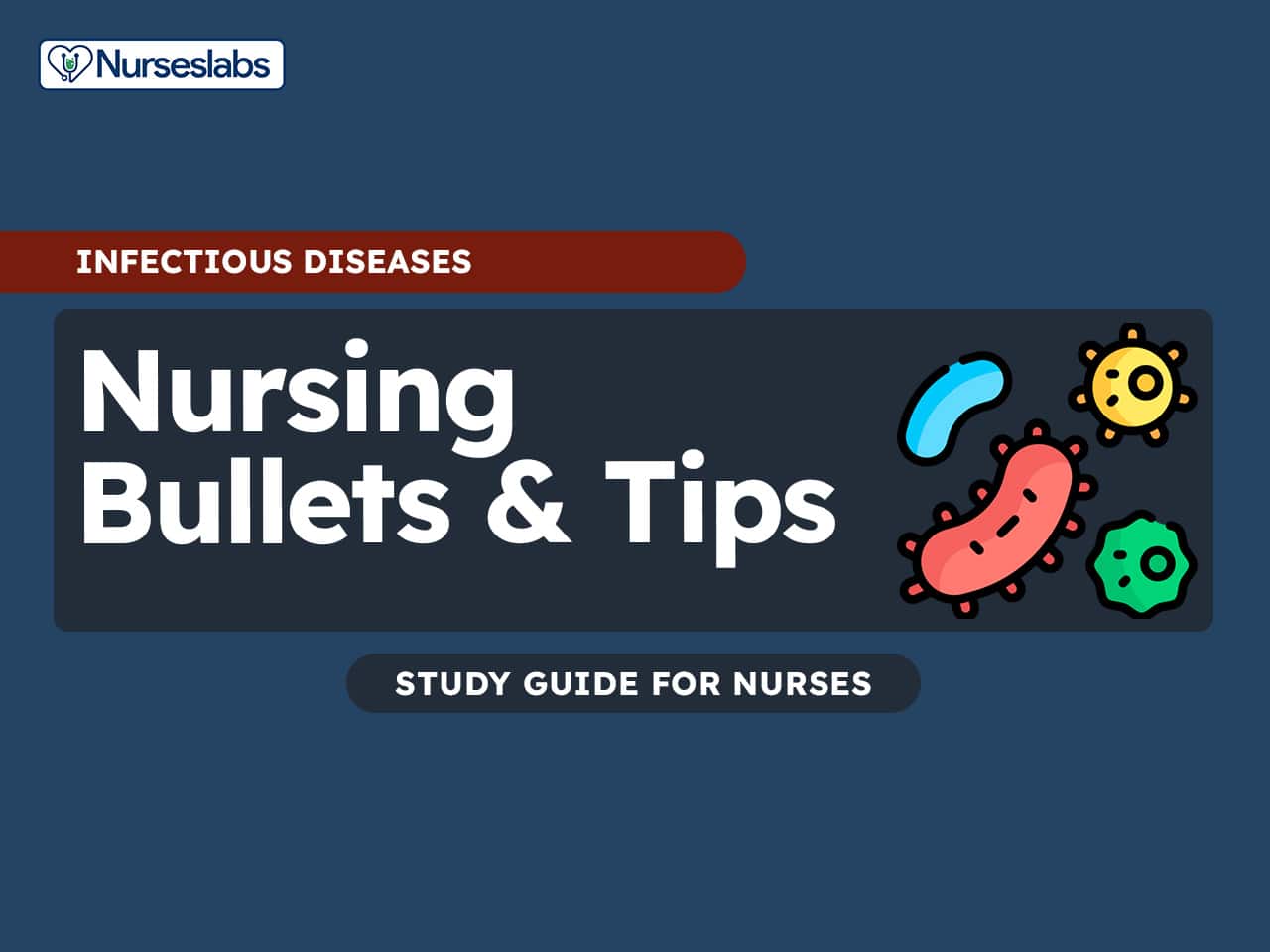

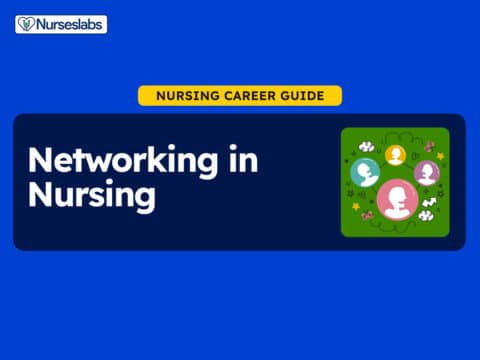
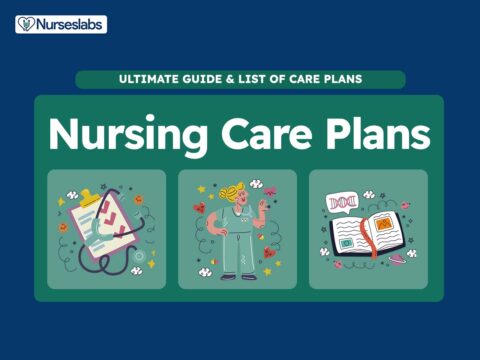
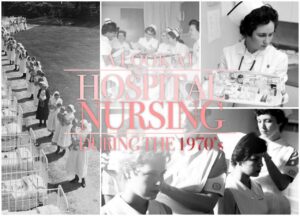
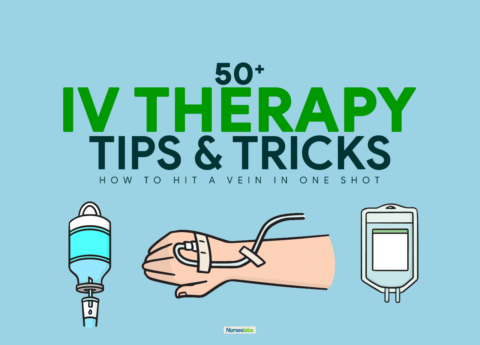



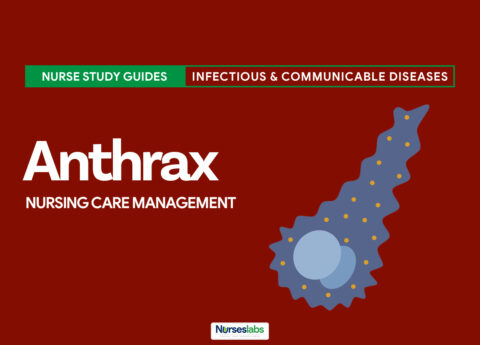
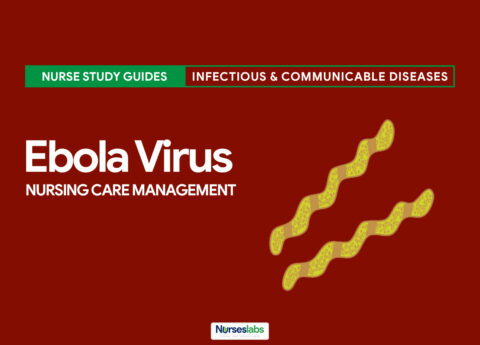
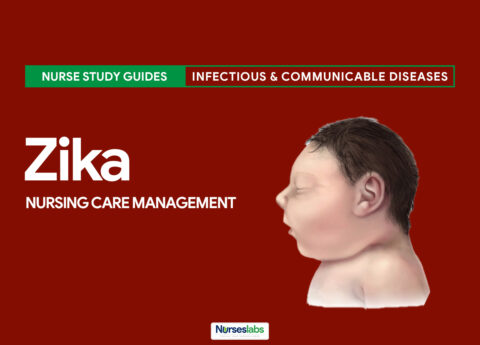
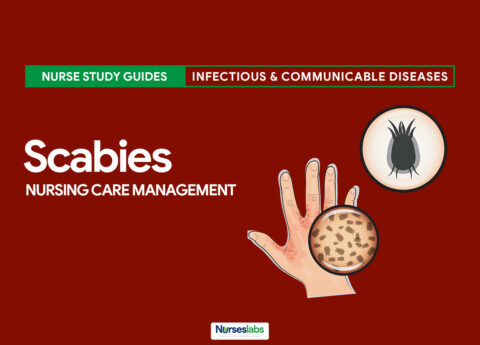


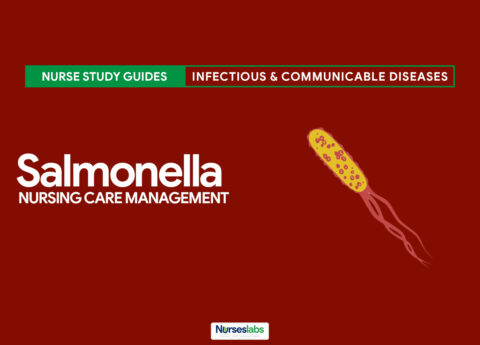




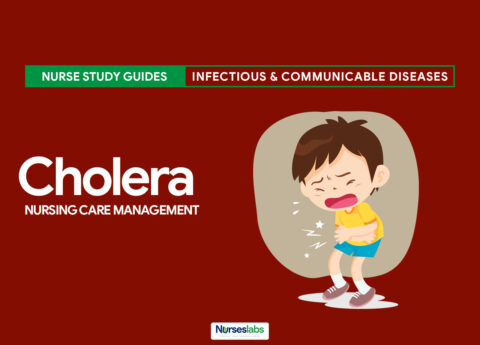
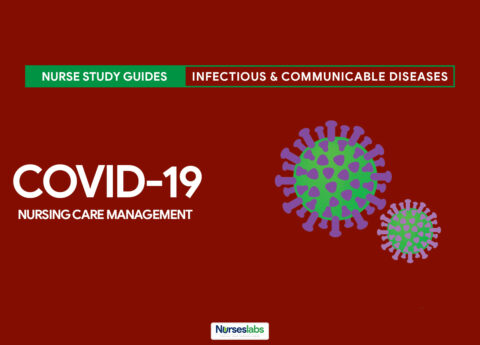

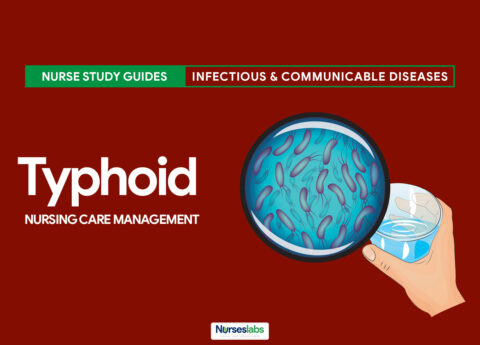
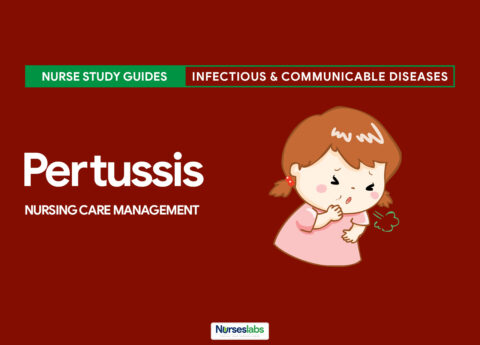
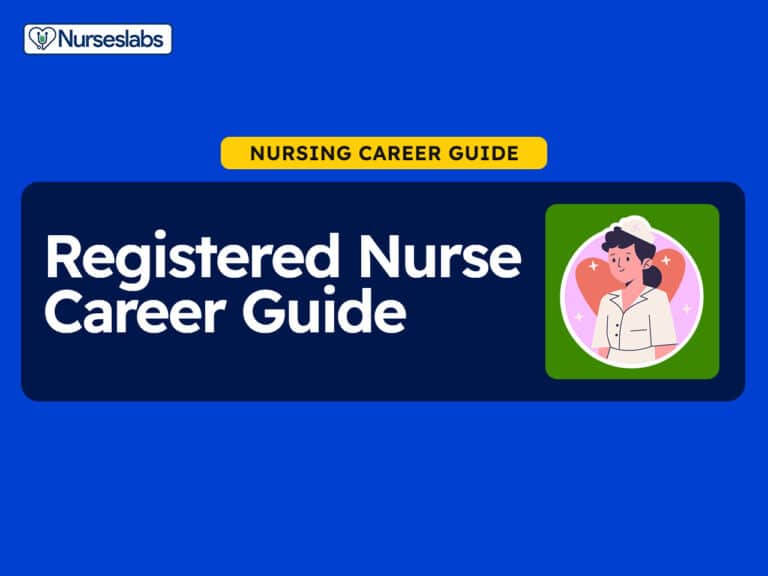

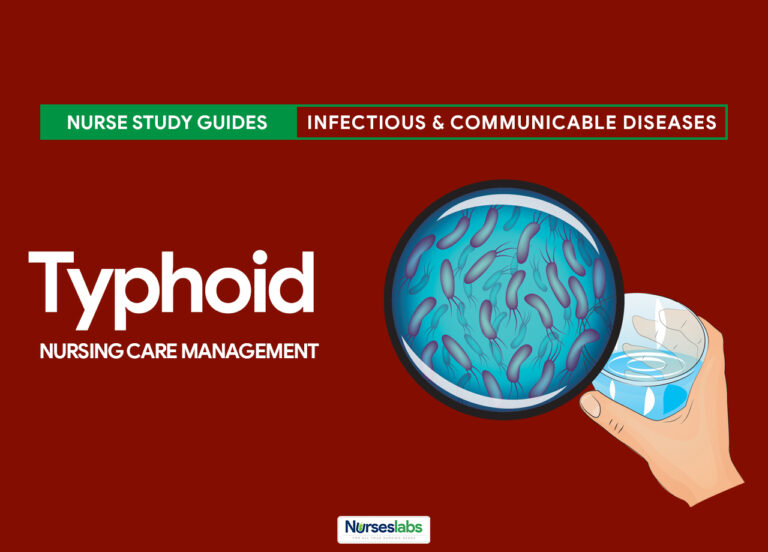

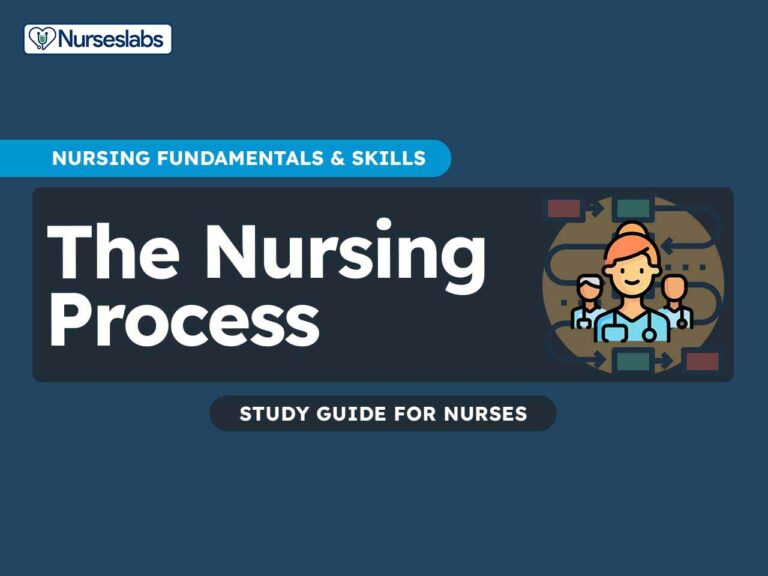



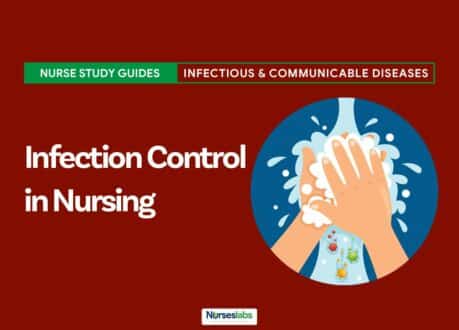



Leave a Comment